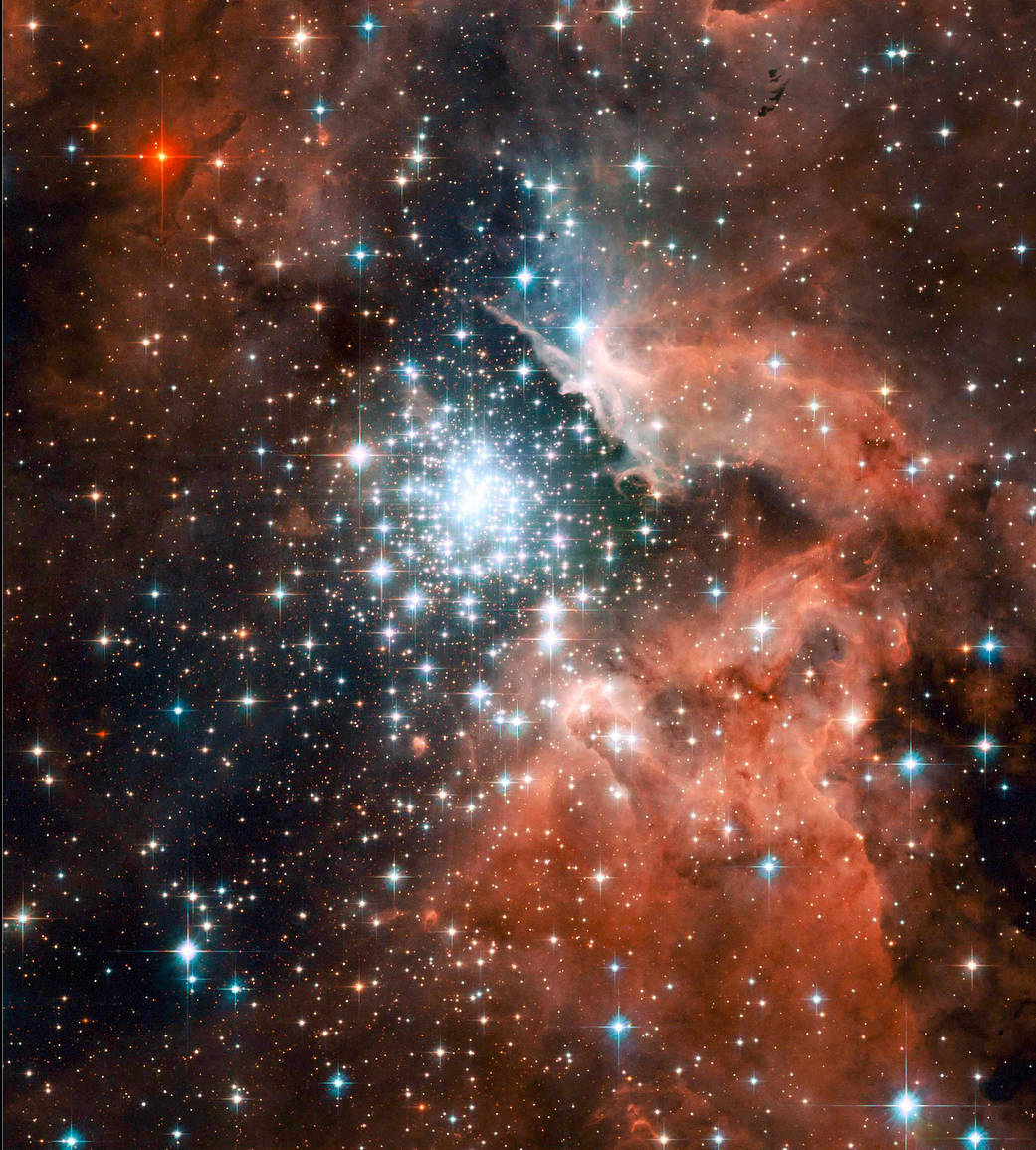恒星珠宝盒
Thousands of sparkling young stars are nestled within the giant nebula NGC 3603, one of the most massive young star clusters in the Milky Way Galaxy.
NGC 3603, a prominent star-forming region in the Carina spiral arm of the Milky Way about 20,000 light-years away, reveals stages in the life cycle of stars.
Powerful ultraviolet radiation and fast winds from the bluest and hottest stars have blown a big bubble around the cluster. Moving into the surrounding nebula, this torrent of radiation sculpted the tall, dark stalks of dense gas, which are embedded in the walls of the nebula. These gaseous monoliths are a few light-years tall and point to the central cluster. The stalks may be incubators for new stars.
On a smaller scale, a cluster of dark clouds called “Bok” globules resides at the top, right corner. These clouds are composed of dense dust and gas and are about 10 to 50 times more massive than the sun. Resembling an insect’s cocoon, a Bok globule may be undergoing a gravitational collapse on its way to forming new stars.
The nebula was first discovered by Sir John Herschel in 1834.
Image Credit: NASA, ESA, and the Hubble Heritage (STScI/AURA)-ESA/Hubble Collaboration
成千上万颗闪亮的年轻恒星位于银河系NGC 3603中,这是银河系中质量最大的年轻恒星团之一。
NGC 3603是银河系船底座螺旋臂中一个著名的恒星形成区,距银河系约2万光年,它揭示了恒星生命周期的各个阶段。
强大的紫外线辐射和来自最蓝、最热恒星的疾风吹出了星团周围的一个大气泡。在周围的星云中,这股急流的辐射塑造了嵌入星云壁中的浓密气体柱。这些气体柱只有几光年高,指向中央星团。它们可能是新恒星的孵化器。
在较小的尺度上,位于右上角的一团被称为“博克”球状体的黑云。这些云团由稠密的尘埃和气体组成,质量大约是太阳的10到50倍。类似于昆虫的茧,博克球状体可能在形成新恒星的过程中经历了引力坍缩。
该星云于1834年由约翰·赫歇尔爵士首次发现。
影像来源:NASA, ESA, and the Hubble Heritage (STScI/AURA)-ESA/Hubble Collaboration

